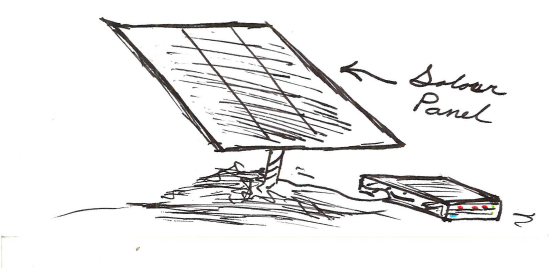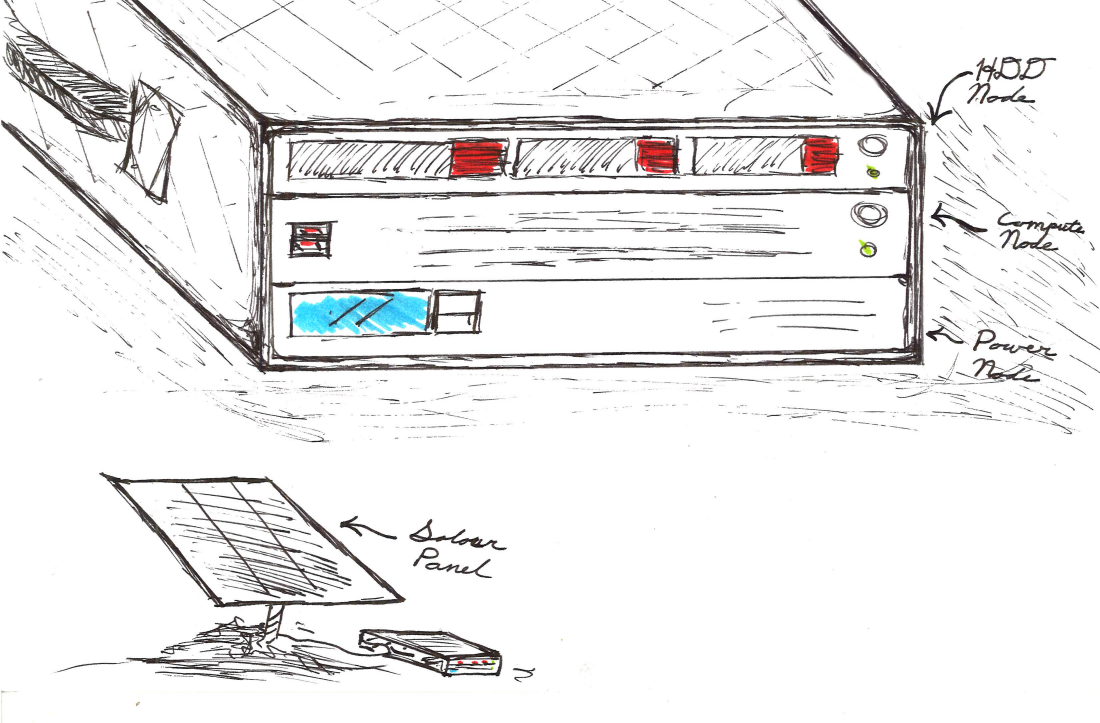About This Project
As computational hardware becomes simultaneously more compact and less power hungry, it becomes possible to do more intense computation while away from the office/lab. We want to know if it is possible to make the Computational Research Lab mobile, and intend to prove that by building a computational cluster that could be easily transportable, able to function in a remote environment, and still perform the complex computational analyses usually done by servers in a data center.
Ask the Scientists
Join The DiscussionWhat is the context of this research?
Many scientists working on disease control, ecology and environmental studies need to do research in remote places. They often lack computing power to really analyze and look at the results that are collected in the field. This is especially important nowadays, when sophisticated computer programs really help advance research. While laptops can do some of it, they just don’t have enough power to handle the vast amount of data that is being generated. A satellite connection to more powerful computers is possible, but that only adds to the already high cost of field expedition. As a result, most researchers crunch the data after they get back, and any field scientists would tell you how annoying it is to find out that they are missing a piece of the data after the expedition is over.
What is the significance of this project?
Big data analysis has always been limited by access to powerful computers. While portable laptops can handle some of the load, you need powerful computing clusters to really crunch the numbers in hours, rather than days. Unfortunately, these are bulky (at least the size of a mini fridge), very expensive to set up (at least $10k) and often installed in air-conditioned locations with backup generators. We want to have the same computing power in roughly half the space, using much less power and cooling, and potentially transportable without special equipment. Our project would not only provide smaller groups (field expeditions) with high power computing, but also might influence the tech industry to further miniaturize computing. This could turn every portable computer into a mobile data center.
What are the goals of the project?
This project has two distinct parts: the first is to build a mobile computational cluster that can handle complex tasks while running on battery, which will be constructed using ordinary consumer parts. The second is to benchmark or test the system using computationally-intensive analyses that bioinformaticians run into on an everyday basis, such as sequence alignment to genomes to complement upcoming products like the MinION that will allow DNA/RNA sequencing in the field. We would also welcome the opportunity to test the systems based on suggestions from field researchers to demonstrate broad utility. Our end goal is to generate a prototype that is small enough to be portable, yet powerful and robust enough to perform multiple heavy computing tasks over the course of days (and weeks).
Budget
A project like this requires a lot of hardware. To start, there are chassis requirements for holding the servers, networking, and power supply. We'll need three server chassis, and the rack case, which holds rack mountable server chassis.
We'll also need a network switch to connect all the servers or nodes. There will be 3 control nodes, one managing hard disks, another for server monitoring, and the third for submitting compute jobs to the cluster of 8 computational nodes, the computational nodes will be put in into the 3 server chassis, saving space.
For each compute node, we intend to use the Orange Pi, which is a cousin to the popular Raspberry Pi. These nodes will also have other components, such as memory, removable hard drives, and cabling.
To provide external power, we want the option for it to plug into a solar panel and generator (or other portable generators). This should be sufficient to power the entire cluster, and enable sustained usage in remote locations.
Endorsed by
Meet the Team
David Molik
Oliver Tam
Oliver Tam earned his Ph.D. at the Watson School of Biological Sciences and his B.Sc. at the University of Sydney. He was a postdoc in Cold Spring Harbor Laboratory with Dr. Molly Hammell, and is now a Sequencing Analyst at ARUP Labs.
Additional Information
CONCEPT IMAGES
Artists Rendition of the front the mini cluster. The three rectangles of the top box are indicative of removable hard-dives like those found in data-centers. The box below that is where the computational mother boards are stored, and the box below that (with the blue screen) is the power supply

This is the computational mini cluster with optional solar panel array.

Another example of both the cluster and the solar panel array.
This Example Rack Case is the kind of Rack Case in Question, These Rotomolded Cases are generally used in the live performance music industry, meant to be used and abused they are tough and the perfect case for a solar powered computational mini cluster.
PHYSICAL DIMENSIONS
We expect that the cluster itself will be 24" x 16" x 34" with the solar panels and solar generator not included.
Project Backers
- 14Backers
- 10%Funded
- $581Total Donations
- $41.50Average Donation


